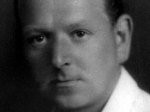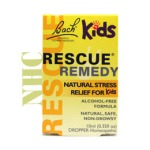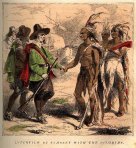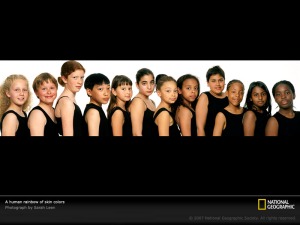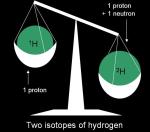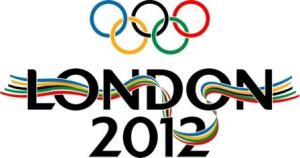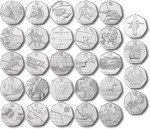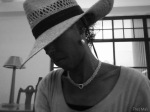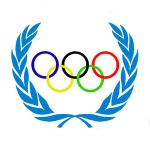
Tag Archives: What Children Do!
Flower Remedies Heal Our Bodies: What are “Flower Remedies?”: What Children Do!®
Bach flower remedies are dilutions of flower material developed by Edward Bach, an English bacteriologist, pathologist and homeopath, in the 1930s.[1] Bach believed that dew found on flower petals retain healing properties of that plant.[2] The remedies are intended primarily for emotional and spiritual conditions, including but not limited to depression, anxiety, insomnia and stress.
The remedies contain a very small amount of flower material in a 50:50 solution of brandy and water. Because the remedies are extremely diluted they do not have a characteristic scent or taste of the plant. It is claimed that the remedies contain “energetic” or “vibrational” nature of the flower and that this can be transmitted to the user.[3] Bach flower remedies are considered vibrational medicines, and rely on a concept of water memory. They are often labeled as homeopathic because they are extremely diluted in water, but are not true homeopathy as they do not follow other homeopathic precepts such as the law of similars or the belief that curative powers are enhanced by shaking and repeated diluting (“succussion”) (http://en.wikipedia.org/wiki/Bach_flower_remedies).
The First Thanksgiving & The Mayflower Ship: What Children Do!®
Voyage on the Mayflower
The Mayflower has a famous place in American history as a symbol of early European colonization of the future United States.[6](http://en.wikipedia.org/wiki/The_Mayflower).
Portugal and Spain founded Navigation Schools. These schools produced expertly trained mathematical and
nautical technicians. A science improvement, and hence what Spain called the New World, which is now The United States of America. (http://tmscconsultingsvcs.wordpress.com/2010/09/10/what-caused-columbus-voyages/).
What Children Do!®: The 2012 Summer Olympic Games in London: What are the Olympic Games?
The 2012 Summer Olympic Games, for the third time in History, will be held in London, England.
Look for the Official London 2012 Triathlon Coin, Tres Mali owns one!
What are the Olympic Games? According to the encyclopedia, The Olympic Games are:
The Olympic Games (French: les Jeux olympiques) (JO)[1], is a major international event featuring summer and winter sports, in which thousands of athletes participate in a variety of competitions. The Olympic Games have come to be regarded as the world’s foremost sports competition where more than 200 nations participate.[2] The Games are currently held every two years, with Summer and Winter Olympic Games alternating, although they occur every four years within their respective seasonal games. Originally, the ancient Olympic Games were held in Olympia, Greece, from the 8th century BC to the 4th century AD. Baron Pierre de Coubertin founded the International Olympic Committee (IOC) in 1894. The IOC has since become the governing body of the Olympic Movement, whose structure and actions are defined by the Olympic Charter (http://en.wikipedia.org/wiki/Olympic_Games).
The evolution of the Olympic Movement during the 20th and 21st centuries has resulted in several changes to the Olympic Games. Some of these adjustments include the creation of the Winter Games for ice and winter sports, the Paralympic Games for athletes
with a physical disability, and the Youth Olympic Games for teenage athletes. The IOC has had to adapt to the varying economic, political, and technological realities of the 20th century. As a result, the Olympics shifted away from pure amateurism, as envisioned by Coubertin, to allow participation of professional athletes. The growing importance of the mass media created the issue of corporate sponsorship and commercialization of the Games. World Wars led to the cancellation of the 1916, 1940, and 1944 Games. Large boycotts during the Cold War limited participation in the 1980 and 1984 Games (http://en.wikipedia.org/wiki/Olympic_Games).
The Olympic Movement consists of international sports federations (IFs), National Olympic Committees (NOCs), and organizing committees for each specific Olympic Games. As the decision-making body, the IOC is responsible for choosing the host city for each Olympic Games. The host city is responsible for organizing and funding a celebration of the Games consistent with the Olympic Charter. The Olympic program, consisting of the sports to be contested at the Games, is also determined by the IOC. The celebration of the Games encompasses many rituals and symbols, such as the Olympic flag and torch, as well as the opening and closing ceremonies. Over 13,000 athletes compete at the Summer and Winter Olympics in 33 different sports and nearly 400 events. The first, second, and third place finishers in each event receive Olympic medals; gold, silver, and bronze, respectively (http://en.wikipedia.org/wiki/Olympic_Games).
The Games have grown in scale to the point that nearly every nation is represented. Such growth has created numerous challenges, including boycotts, doping, bribery of officials, and terrorism. Every two years, the Olympics and its
media exposure provide unknown athletes with the chance to attain national, and in particular cases, international fame. The Games also constitute a major opportunity for the host city and country to showcase itself to the world (http://en.wikipedia.org/wiki/Olympic_Games).
Related articles
- Two Saudi women to compete at London Olympics (thehindu.com)
- The great Olympics sponsorship bandwagon (bbc.co.uk)
- IOC allows Kuwait to hoist its national flag at London Games (english.ruvr.ru)
- London 2012 Olympics: Games legend Michael Johnson believes Oscar Pistorius has an ‘unfair advantage’ (telegraph.co.uk)
- Saudi Arabia to send first-ever female athletes to Olympics (csmonitor.com)
- Saudi Arabia to send 2 women to Olympics (nbcolympics.com)
- At London Olympics, a Victory for Women (nytimes.com)
- “Kalmadi’s visit will defy fundamental principles of Olympism” (thehindu.com)
- Muslims Barred IOC from Honoring Murdered Israelis (israelnationalnews.com)
- What Children Do! : The 2012 Summer Olympic Games in London: What are the Olympic Games? (whatchildrendo.wordpress.com)
What Children Do!®: How Astronomy Has Contributed to Technology!
 What is Astronomy?
What is Astronomy?
Astronomy is a natural science that deals with the study of celestial objects (such as stars, planets, comets, nebulae, star clusters and galaxies) and phenomena that originate outside the atmosphere of Earth (such as cosmic background radiation). It is concerned with the evolution, physics, chemistry, meteorology, and motion of celestial objects, as well as the formation and development of the universe (http://en.wikipedia.org/wiki/Astronomy).
Astronomy is one of the oldest sciences. Prehistoric cultures left behind astronomical artifacts such as the Egyptian monuments, Nubian monuments and Stonehenge, and early civilizations such as the Babylonians, Greeks, Chinese, Indians, Iranians and Maya performed methodical observations of the night sky. However, the invention of the telescope was required before astronomy was able to develop into a modern science. Historically, astronomy has included disciplines as diverse as astrometry, celestial navigation, observational astronomy, the making of calendars, and astrology, but professional astronomy is nowadays often considered to be synonymous with astrophysics (http://en.wikipedia.org/wiki/Astronomy).
What is Astonomy doing for Modren Technology?
According to Astronomy Magazine Vol. 40 no. 5 May 2012 issue, Astronomy has done many things for Technology, including:
- Developed wireless internet. John O’ Sullivan developed this signal for evaporating black holes. This signal is now used as the wireless internet system.
- GPS (Global Positioning System) comes from 24 of the 30 satellites being used for the general public.
- The James Webb Space Telescope (JWST) which is scheduled to launch 2018 is also used for optical mapping in technology.
- The study of the Sun’s Chemical composition is used for cancer treatment, X-ray and gold nanoparticle.
What Children Do!®: Shapes in the Clouds & Trees “Imagination”
Children see shapes in and objects in the:
- Clouds & Trees
- Rocks & Mountians
- Dirt & Flowers
- Bushes & Plants
Imagination is “This”:
- I am able to visualize.
- I am able to for images and ideas.
- I am creative.
- I am resourceful.
Imagination is “That”!
Imagination or creativity is a part of the mind, where ideas, thoughts, and images (pictures) are formed. Imagination also helps to think of ways of dealing with difficulties or problems. Like having an “eye” in your mind, “the mind’s eye”, and dreams. Imagination is the strongest when the images (pictures) and ideas are things never seen or experienced directly.
